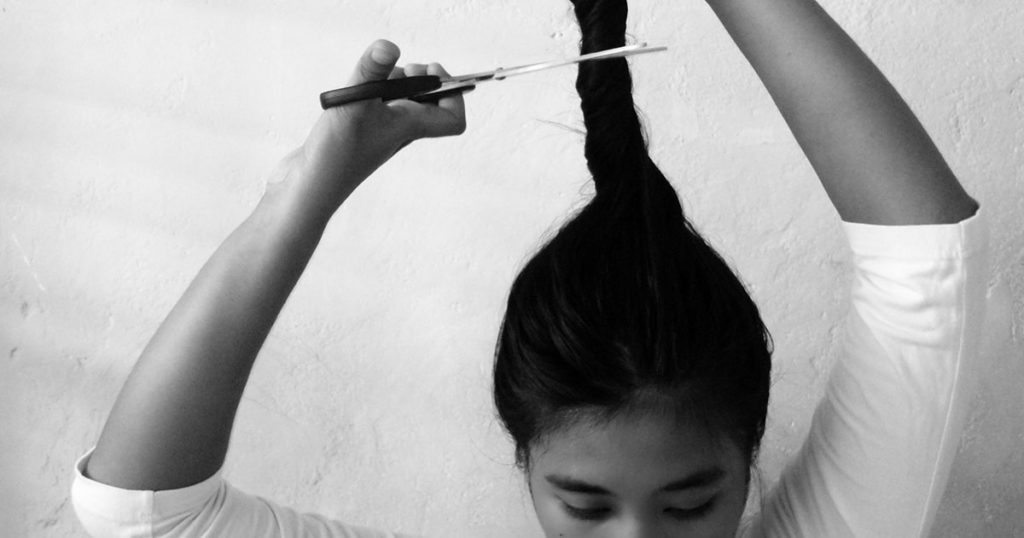
My gorgeous, thin, dark-eyed student with the olive skin was in her usual place, against the far wall. A window behind her showed the apartment building across the street, its windows now lit. On early evenings, someone pulling aside a curtain in one of them and gazing into the lit windows of my classroom might catch me gazing out. But that day, at that moment, while I was waiting for the students in the pre-intermediate class to finish an exercise, I was puzzling over this beautiful young woman bent over her book. Something was different. She looked up and caught me contemplating her. “Did you cut your hair?” I asked as she put down her pencil.
“Yes,” she said, with her slow smile. “Thirty centimeters.”
Thirty centimeters is about 12 inches. Her hair was still longer than shoulder-length, still straight, but 30 centimeters! That’s a lot of hair to lose. How had I not known instantly what the difference was? I asked her how long her hair had been. She swiveled in her seat and held her hand against her lower back. “About here,” she said.
My next question was how she knew exactly how much they’d taken off.
She explained that 30 centimeters is the minimum length for a donation. She’d been letting her hair grow so she’d have enough to donate and enough left to not feel shorn. I nodded.
How, I still wondered, had I missed the change? Well, it turns out that though hair is a woman’s crowning glory, it is not the only glory or even the most striking. This student with her slightly gravelly voice, her slow awkward huh huh huh laugh, her perfect teeth and hawkish nose, is sporting a dozen crowns. There she sits, gleaming. The bony shoulder, the snuggly sweater, the hair that glistens, the eyes that sparkle, the shining wit. At least a dozen crowns. Samson was diminished when his hair was cut. This woman was not. What’s the loss of one crown when you possess so many?
How long, I asked, before it grows back? She figured it would take a year. Then she’d go again to donate it. Cancer patients, she believed, were the main recipients of the wigs manufactured from the donations. Starting right then, at the moment of cutting, the surplus was just that—surplus. I wondered but did not ask if a donation was easier that way—going way beyond what was the ideal length for her and cutting back rather than cutting and slowly returning to her preferred length. All that extra hair, all that weight of all those months of accumulation. Well, I thought, the difference would be that she would never be lacking. “How wonderful of you giving up your lovely long hair,” someone might comment. With her slow huh huh huh, she’d let them know that the loss was no loss to her. She had never given up what she wanted to keep. That too is part of her demeanor, to downplay her gift. She’d be different when she left the haircutter, but she’d be exactly the same—kind and beautiful, another gift to her credit, another crown.

